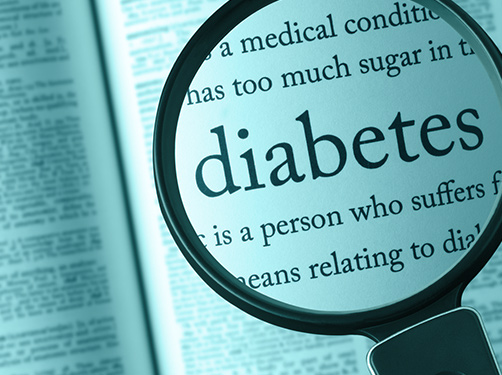What is type 1 diabetes?
Scientific support: Dr. Martin Scherm
Type 1 diabetes is the most common metabolic disorder in childhood. It mostly occurs in children and adolescents under 14 years old but can also be diagnosed for the first time in adulthood.
Type 1 diabetes develops because the body can no longer produce the essential hormone insulin. Without insulin, sugar from food can't enter the body's cells, where it is needed for energy. Instead, the sugar remains in the blood, causing an increase in blood sugar levels.
Typical symptoms of type 1 diabetes include intense thirst, frequent urination, persistent fatigue, and weight loss. People who experience these symptoms should see a doctor promptly.
People with type 1 diabetes require lifelong insulin injections. However, modern technological aids allow for a nearly normal life without restrictions. Unfortunately, type 1 diabetes is currently not curable.

Contents
1. Type 1 diabetes: What’s behind it?
Unlike type 2 diabetes, the development of type 1 diabetes is not influenced by lifestyle factors.
It is an autoimmune disease in which the body's immune system mistakenly attacks and destroys the insulin-producing beta cells in the pancreas. Beta cells are responsible for producing the hormone insulin, which is essential for life.
Without insulin, the body cannot metabolize the sugar (glucose) from food. As a result, blood sugar levels rise, leading to the onset of symptoms.
The exact reason for why the immune system destroys the insulin-producing beta cells is not fully understood. Learn more about what is currently known about the development of type 1 diabetes here.
Good to know:
About 93% of all people with diabetes have type 2 diabetes, but there are other forms of diabetes beyond type 2 that are not widely known.
What is common in all forms of diabetes is increased blood sugar. However, the origin varies greatly depending on the type of diabetes. While an unhealthy lifestyle, especially being overweight, lack of exercise, and an unhealthy diet, contributes to the development of type 2 diabetes, type 1 diabetes is caused by a loss of function in the beta cells of the pancreas. Treatment options also vary depending on the type of diabetes and the course of the disease.
2. What are typical symptoms of type 1 diabetes?
Initial symptoms of type 1 diabetes arise when the body produces almost no insulin, causing blood sugar to rise to life-threatening levels. These symptoms often develop within a few weeks or even days.
Common symptoms of type 1 diabetes include:
- Intense feeling of thirst
- Frequent urination
- Weight loss
- Muscle weakness
- Persistent tiredness and fatigue
- Visual impairment
If these symptoms are not recognized and treated with insulin in a timely manner, it can lead to a condition known as diabetic ketoacidosis. Diabetic ketoacidosis is a metabolic imbalance associated with the body becoming acidic, which can lead to unconsciousness and is life-threatening.
Symptoms indicating diabetic ketoacidosis include:
- Stomach pain
- Vomiting
- Nausea
- Deep and rapid breathing
- Foul-smelling breath or urine
- Clouding or loss of consciousness, potentially leading to a coma
Diabetic ketoacidosis is considered an acute medical emergency that requires prompt medical attention.
3. How is type 1 diabetes diagnosed?
If there is suspicion of diabetes, a medical examination can be performed to quickly provide more information. Typical changes in blood and urine counts include:
- Increased blood sugar levels (hyperglycemia)
- Increased excretion of sugar (glucose) in the urine (glucosuria)
- Hyperacidification of the blood due to an accumulation of ketone bodies (ketoacidosis)
If it is unclear which type of diabetes is present, a test for autoantibodies can also be conducted. A positive result indicates type 1 diabetes. However, it is rare for type 1 diabetes to occur without the presence of autoantibodies.
4. How does insulin regulate blood sugar levels?
In individuals with a healthy metabolism, the hormone insulin acts like a key, allowing glucose to be taken up by the body's cells from the blood.
The following example illustrates how sugar from food enters the blood and then, with the help of insulin, reaches the body's cells:
- We consume energy through food, especially carbohydrate-rich foods like bread, pasta, rice, or potatoes, which provide quickly available energy.
- During digestion, carbohydrates are broken down into small sugar molecules (glucose), which then enter the bloodstream from the intestines.
- Blood sugar levels rise.
- The pancreas immediately detects the increase in blood sugar. In response, it releases a precise amount of insulin into the blood.
- Insulin binds to the body's cells and, like a key, facilitates the uptake of the ingested sugar into the cells.
- As a result, the blood sugar level returns to the normal range.
In individuals with type 1 diabetes, the pancreas cannot produce insulin, leading to elevated blood sugar levels.
Once diagnosed with type 1 diabetes, this lost function of the pancreas must be artificially mimicked by injecting insulin.
For people with type 1 diabetes, this means estimating the amount of carbohydrates whenever they eat or drink. The corresponding amount of insulin, known as bolus insulin, must be injected for each meal.
In addition, individuals with type 1 diabetes also require insulin between meals to maintain stable blood sugar levels. This maintains organ functions and metabolic processes in the body. The insulin needed to cover basal metabolic needs is referred to as basal insulin.
5. Type 1 diabetes in everyday life
The supply of insulin is crucial for individuals with type 1 diabetes. Various technical aids are now available for this purpose.
An insulin pump, for example, is a small device that is connected to a catheter on the body. It continuously delivers a small amount of insulin into the blood (basal rate) to meet the body's basic needs. Individual amounts of bolus insulin are administered through the pump for meals.
More information on technical options for type 1 diabetes therapy can be found here.
In addition to the supply of insulin, blood sugar control is an essential part of diabetes therapy. The goal is to keep blood sugar levels as constant as possible within a specified target range, usually between 70 and 180 mg/dl (3.9 to 10.0 mmol/l).
If blood sugar levels drop too low, hypoglycemia must be counteracted with carbohydrate-rich foods, such as juices or glucose. If blood sugar levels are too high, hyperglycemia must be corrected with a dose of insulin.
In addition to measuring blood sugar using a drop of blood from the fingertip, individuals with type 1 diabetes now often use a continuous glucose measurement sensor (CGM device). This device continuously measures the glucose content in subcutaneous fat tissue (tissue glucose), making therapy more manageable for many patients.
The insulin pump can also be coupled to the glucose sensor via so-called hybrid closed-loop (or AID) systems. If tissue glucose drops too low, insulin delivery is automatically stopped. Conversely, more insulin is administered if tissue glucose is too high. However, individuals with diabetes still need to independently administer the individual insulin amount through the insulin pump for meals.
6. Risk of complications (secondary diseases)
Despite advanced therapy techniques, maintaining blood sugar levels within an individual's target range is a daily challenge for affected individuals.
Compared to metabolically healthy individuals, fluctuations in blood sugar levels occur more frequently. High blood sugar damages small and large blood vessels as well as nerves, affecting various organs and leading to secondary diseases. Regular medical check-ups are therefore important for people with type 1 diabetes.
More information on diabetes-related complications and preventive measures can be found here.
Sources:
Deutsche Diabetes Gesellschaft: S3-Leitlinie Therapie des Typ-1-Diabetes. Version 5. 2023
Haak, T. et al.: Therapie des Typ-1-Diabetes. In: Diabetologie, 2022, 17: S133-S144
Kostopoulou, E. et al.: Diabetic Ketoacidosis in Children and Adolescents; Diagnostic and Therapeutic Pitfalls. In: Diagnostics (Basel), 2023, 13: 2602
As of: 24.01.2024





